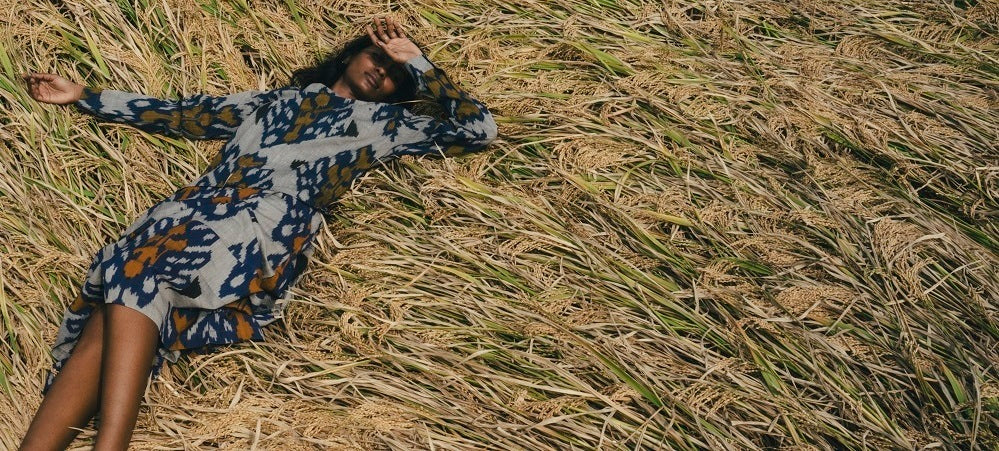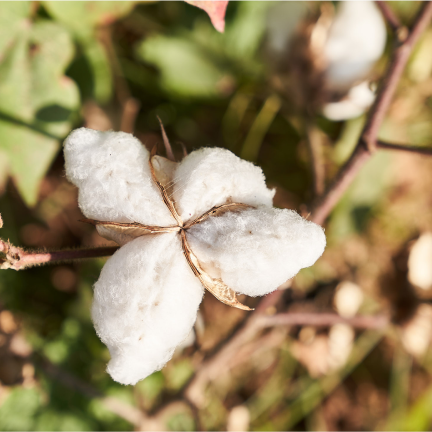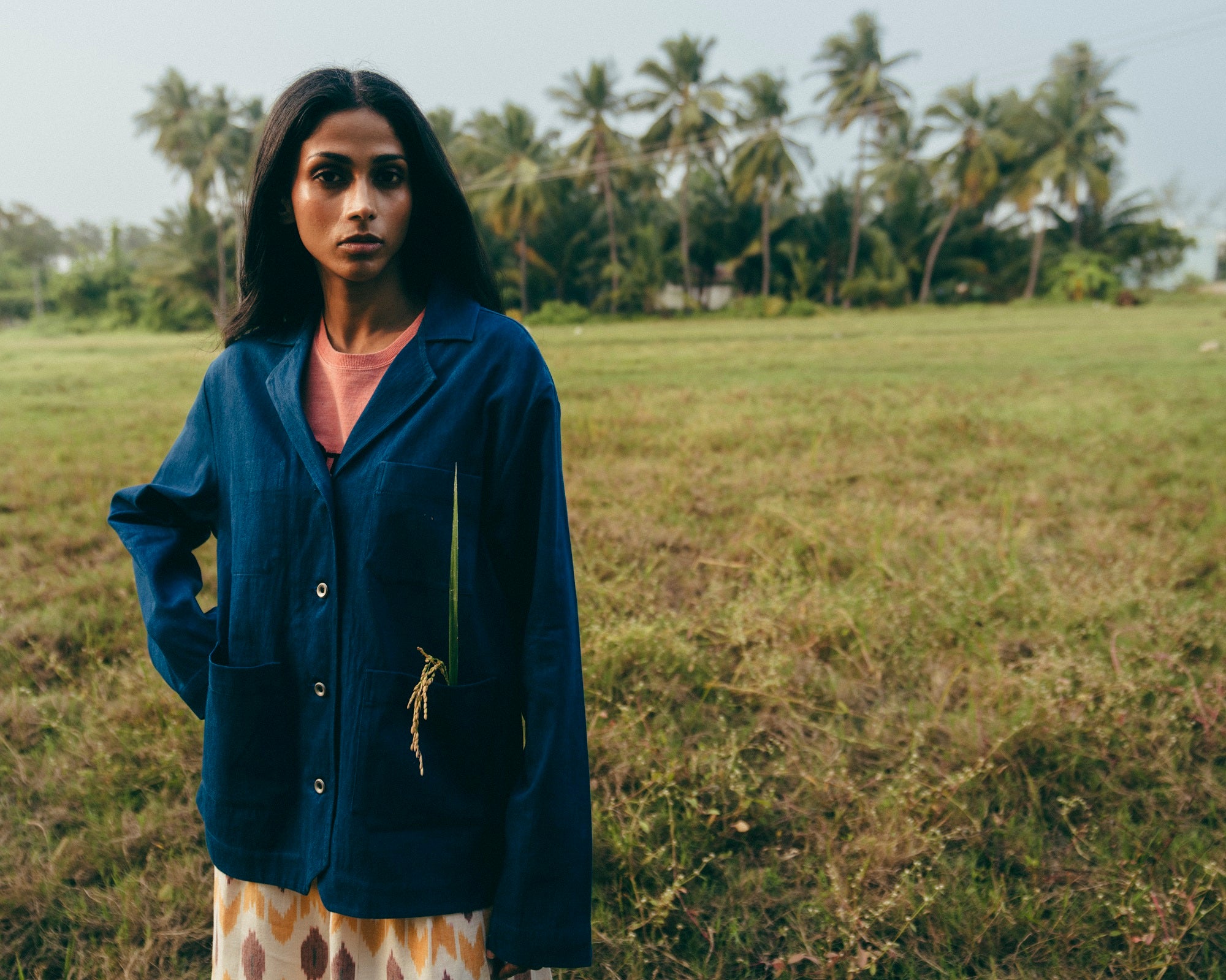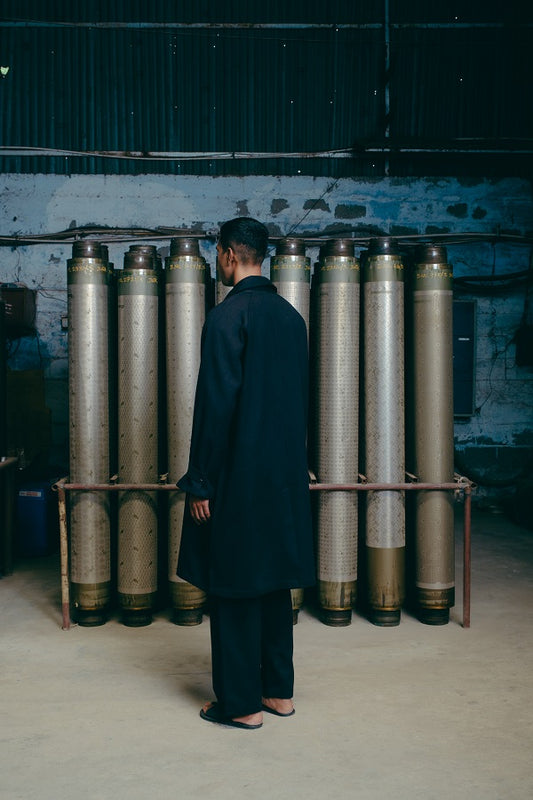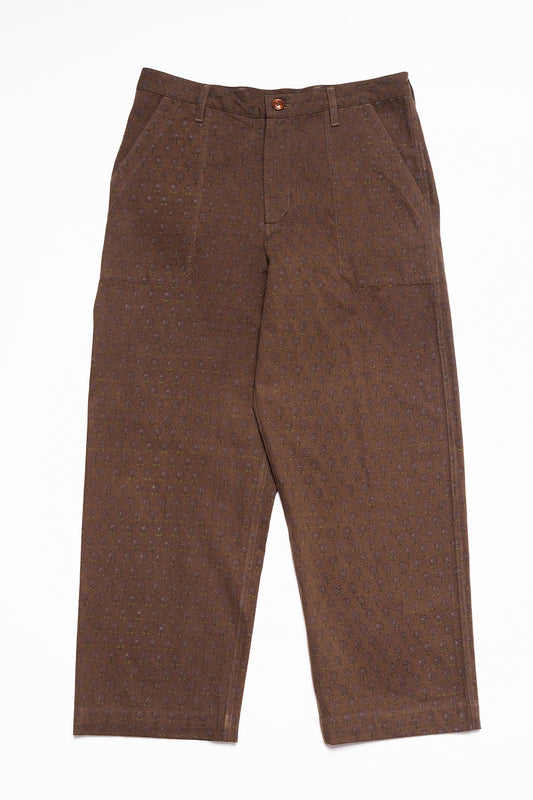In the desert of far, Northwestern India is a community of block printers. The sunny, arid landscape of Bagru and Ajrakhpur is the perfect place to practice their craft using handmade teak blocks and natural dyes to print fabric.

This community is one of the last to practice the ancient art of printing fabric with plants. As other block printing communities transitioned to synthetic dyes, these specific artists maintained traditional practices. The printers work intimately with Nature at every step of the process. Each of our block-printed pieces is a representation of the craftsman, the weather, and the plant dyes.

The designs we create for the block printers are inspired by the farm or our philosophies. Our pollen print and marigold print represent the other flowers on the farm that help the cotton succeed. The Lotus print has the lotus leaf, bud, and flower. Lotus flowers represent regeneration - the core tenant of our farming practices.

The printers practice two printing techniques: Dabu printing and Bagru printing. For Dabu printing, the printers dip the handmade teak blocks in clay, limestone, jaggery, or Gond (a gum from a local tree), print the design onto the fabric, and dip the fabric in a dye bath. Once washed, the resulting design is lighter than the background color. For Bagru printing, the printers dip the blocks into the dye and directly print the colored design onto the fabrics. Many of our prints include both techniques.
How our Pollen Block Print fabric is made:
1. Regenerative cotton is grown on our farm in Tamil Nadu, where it is also made into fabric.
2. The fabric travels to the block printers in Gujarat.
3. The printers start by soaking the fabric in myrobalan, laying it in the sun to dry, then stretching the fabric out on long tables
4. They resist print the pollen design using hand-carve teak blocks and wax
5. They take the printed fabric outside and dip it in an indigo bath three times
6. They wash off the wax and lay the fabric in the sun to dry
7. Once the fabric dries, the printers lay the fabric on the table again and use madder root dye to print on the red pollen flowers
8. They lay the printed fabric out to dry in the sun to cure the dye
9. They wash the fabric in a series of baths to remove excess dye and dry it in the sun one more time
The resulting hues result from the plants in the dye and whether a cloud goes over the sun while the color cures. Each piece is a truly beautiful and unique reflection of Nature.
- By Mairin Wilson
Shop our block-printed collection







